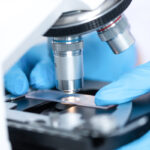How Long Does IVF Take?

IVF treatment
Infertility is the situation of not being able to get pregnant despite having unprotected sexual intercourse for a year. Even if pregnancy is achieved, having pregnancy problems that result in miscarriage repeatedly is also considered an infertility problem. The rate of infertility problems in Turkey is 15% on average. A mother and father who have a baby, even if there is no problem related to the father or mother regarding pregnancy, the probability of getting pregnant every month despite having regular sexual intercourse is only 25%. At the end of a year, 80% of the candidates in the society can get pregnant, but 15% face infertility, that is, sterility.
Generally, in 40% of couples who cannot conceive, there is a problem with the father candidate. In 15%, there are problems with ovulation in the mother candidate, and in the other 15%, there are problems with the uterus and tubes. In the 30-40% rate, problems with the father candidate and the mother candidate are seen together. In 15% of the candidates, no problem can be detected. This is called unknown infertility.
Causes of Infertility
Reasons for Infertility in the Expectant Mother
- Ovulation Disorders: Irregular or absent menstrual periods in women are defined as ovulatory disorders.
- Tube (canal) blockage or damage: If one or both tubes are blocked, the sperm and egg cannot come together in the tube. For this reason, fertilization and pregnancy are not possible.
- Endometriosis: The growth of uterine tissue outside the uterus. Sometimes it can be very painful.
- Age of the mother: As the mother ages, her ovarian reserve decreases. A decrease in reserve means that the probability of pregnancy decreases for mothers aged 35 and above. This rate drops to 5% for those aged 40 and above.
- Environmental conditions: Stress, smoking, alcohol use, poor diet, and continuous use of various medications are factors that reduce the possibility of pregnancy.
Reasons for Infertility in the Father Candidate
- Problems with sperm count, motility and morphology are the most common causes of infertility. In order to detect this condition, a Spermiogram test called “Semen Analysis” must be performed. In order for the results of the semen analysis to be examined correctly, the man must not have sexual intercourse for 3-5 days, and then a sample is taken.
Normally, the father candidate’s sperm count should be at or above 20 million/ml, the motile sperm rate should be 30% and the structurally normal sperm rate should be 4% (Kruger morphology assessment). Semen analysis results below these values are a significant obstacle to achieving pregnancy through natural methods.rlerin altında çıkan semen analiz sonuçlarının çıkması doğal yöntemlerle gebeliğin gerçekleşmesi için önemli bir engeldir.

How Long Does IVF Treatment Take?
IVF treatment is a process that can vary depending on the treatment method and the causes of infertility. It is divided into two as long and short protocols. The long protocol lasts an average of 45 days. The first 30 days of this process are the preliminary preparation phase, where the patient uses her medications at home. After the preparation phase, the stimulation phase of the ovaries begins in the new menstrual period. This period lasts an average of 10 days. After this point, the egg collection process, the fertilization phase of the eggs and the transfer of the fertilized embryos are performed as the last phase. A pregnancy test is performed in the blood 12 days after the transfer. There is no preliminary preparation period in the short protocol. In this protocol, the ovary stimulation phase is directly initiated. The following stages are the same as the long protocol. The short protocol lasts an average of 18 days.
What is the appropriate period to start treatment?
The first day of menstruation is considered day 1, and the treatment is started on the 2nd or 3rd day. First, ovarian reserves are checked with ultrasonography. If not done before, hormone tests and sperm analysis are performed. If the test results are suitable for insemination treatment, the patency of the tubes is checked with a hysterosalpingogram.
How Long Do IVF Stages Last?
In summary, the stages of IVF are as follows: eggs are taken from the ovaries of the mother candidate using special techniques, and the sperm sample taken from the man is combined in laboratory environments outside the body. In this way, fertilization is achieved. The resulting embryo is transferred to the mother’s uterus. The embryo transferred to the mother’s uterus will ensure pregnancy.
Diagnosis for in vitro fertilization treatment
The health status is examined and evaluated by doctors and a diagnosis is made. This is the first stage in which the treatment technique and IVF drugs to be applied are decided.
How long does it take for hormones to be suppressed?
Normally, one egg matures each month to ovulate. In order to increase the possibility of pregnancy in IVF treatment, the number of mature eggs is tried to be increased to at least 3. For this purpose, hormones are suppressed with appropriate drugs in the appropriate period.
Stimulation of the Ovaries
The eggs are stimulated with hormone injections. The drugs applied may vary depending on the patient, age and weight. The development of the eggs is monitored with ultrasonography.
Egg Development
Egg cell development is monitored with ultrasound and blood tests. HCG injection is applied to increase ovulation. HCG is a natural hormone. It is applied to women to ovulate.
Egg Collection
The collection phase of the mature eggs is started with Vaginal Ultrasonography and needle aspiration methods. During the application, local anesthesia or sedative drugs are applied. Egg collection is completed in approximately 20-30 minutes.
Egg Fertilization
The collected egg cells are kept in a suitable environment under laboratory conditions. The sperm taken from the prospective father is injected into the egg cell using the Microinjection technique. This procedure is applied 4-6 hours after the eggs are collected.
Transferring the Embryo to the Uterus
The embryo is transferred into the uterus. After a wait of approximately 48-72 hours, it becomes clear whether the embryo has developed healthily.
Pregnancy Test
In IVF treatment, a pregnancy test is performed 12 days after the embryo is transferred. If the blood test result is positive, pregnancy has occurred, if negative, pregnancy has not occurred.





